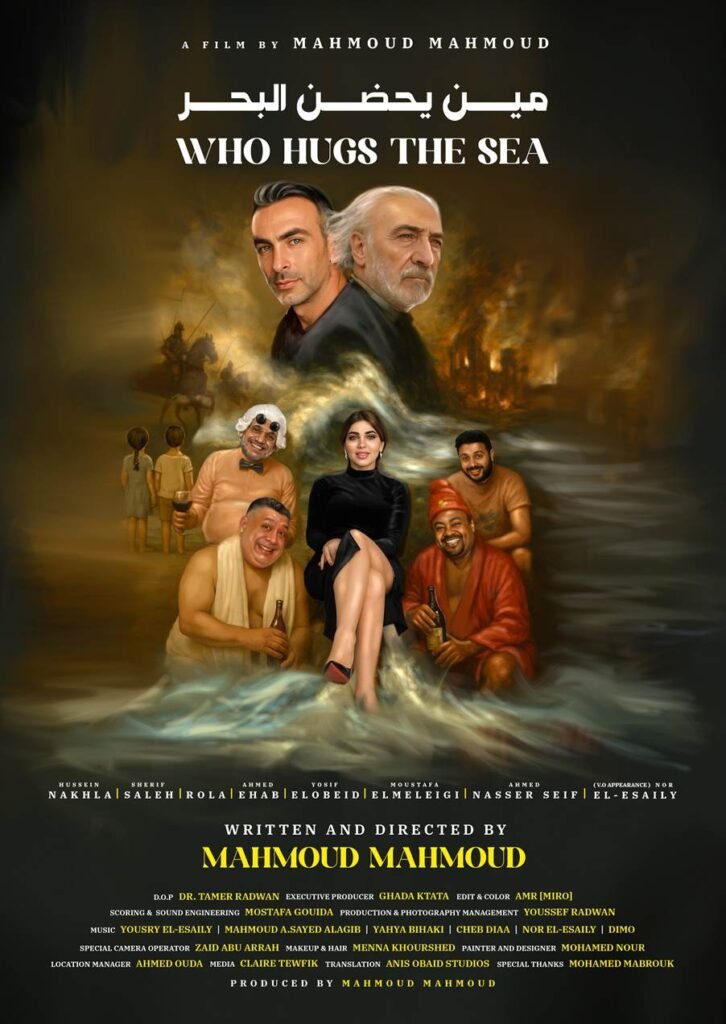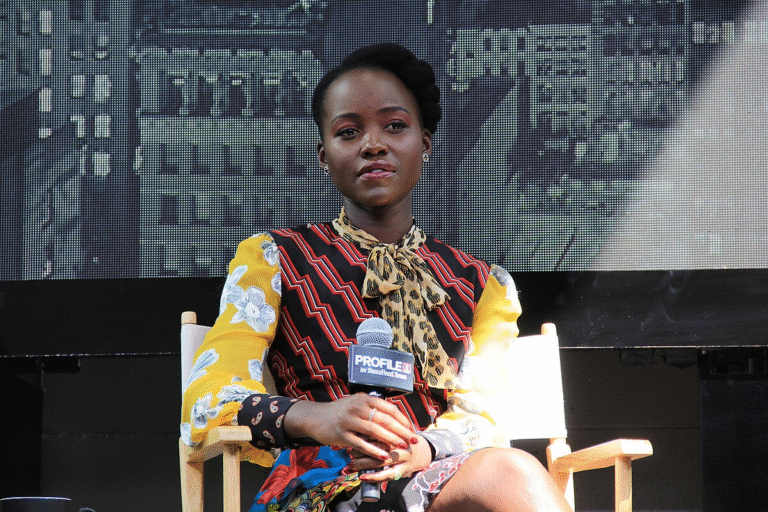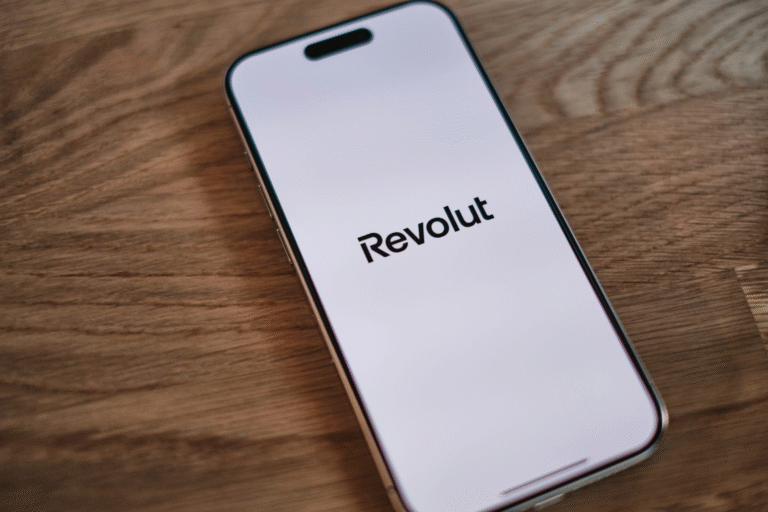
Introduction
Lies, betrayal, war… all form the shadows that inhabit the backdrop of Who Hugs the Sea.
“Don’t you dare grow up without me… and every one of us needs a hug — through a word, a question, or a gesture of kindness.”
With such searing lines, the film opens its journey, exposing a deep human wound and a desperate search for warmth in a merciless world. Here, the narrative does not begin with a conventional plot, but with an existential sensation, a shared human need, and an open-ended question with no answer.
—
The Director and His Vision
Mahmoud Mahmoud is not merely an independent filmmaker telling small stories; he is a visual poet and experimental auteur who redefines the very meaning of independent cinema.
For him, cinema is not a ready-made product, but an experience to be lived. It is not just a story to be told, but a space for philosophy, contemplation, and the intrusion of human comedy amidst suffering.
In Who Hugs the Sea, silence becomes a language, shadow a narrator, and place a living memory. These are not just technical tools but a rebellion against conventional storytelling, adding a new dimension to Egyptian and Arab independent cinema.
—
Performances
Ahmed Nasser Seif
Delivered an Embodied Performance, turning his body into a vessel for memory and emotion. Every tremor, every tonal shift in his voice carried an inner history. His work represents Physical Realism, where the body itself becomes a parallel text to dialogue.
Sherif Saleh
Portrayed a character weighed down by depression and inner torment. His style depended on economy of expression, transforming the body into a visual medium of collapse. A pure example of Screen Physicality: the body itself as a language of psychological pain.
Hussein Nakhla
His performance was marked by inner depth and firmness, with stubbornness as his defining trait. Each gesture and silence was charged with resistance, a refusal to break despite the burden of suffering. A prime example of Naturalistic Performance, where simplicity is enriched with defiance.
Mostafa El-Meligi
Distinguished by Kinetic Acting, using movement and dance as a full language to embody the role. His body became a performative statement, creating a visual rhythm that carries dramatic weight.
Youssef Al-Obaid
Blended Situational Comedy with Verbal Comedy, turning laughter into a mirror of paradox and pain. His comedy, dramatic in essence, reflected tragedy through humor.
Ahmed Ihab
Marked by physical precision and disciplined gestures. Each movement was measured, revealing the character’s anxiety and internal need.
Rola
Embodied the concept of “The Absent Presence” — a silence charged with observant energy. She was not merely a figure on screen but a mirror to the emotions of others, an active vessel of tension.
Nour Al-Assili
Portrayed the role of his past lover, the first love that lingers in memory. Her entrance carried the symbolism of innocence and childhood affection, while her singing in the film became an emotional letter reaching from past to present. Her voice was not mere melody but a vessel of longing and warmth. The song she performed was both beautiful and affecting, a lasting message of love persisting despite the cruelty of time.
—
Ensemble Acting
What distinguishes Who Hugs the Sea is that these performances were not isolated islands, but a unified whole. Each actor contributed a unique layer, yet together they formed Ensemble Acting: a collective performance that makes each scene a shared space.
The harmony revealed that the film’s strength does not rest on one star but on the interplay of all actors as a living organism. The audience does not just follow an individual, but experiences a web of relationships and emotions woven into a cohesive totality — redefining ensemble acting in Arab independent cinema.
—
Music and Songs
“Hawalt” (I Tried): Sung by young artist Diaa, with lyrics by Mahmoud Abdel-Sayed Al-Ajeeb. A cry of memory and broken longing, embodying inner struggle.
“Who Hugs the Sea”: Written and performed by Yousry Al-Essaily, serving as an existential reflection of the film’s central question.
Jordanian folk song: Performed by child singer Nour Al-Assili, reviving cultural memory and bridging generations.
Yahya Beheqi (Tanzania): His soulful, resonant voice added a spiritual dimension that transcends borders, articulating the existential gap of human absence.
Score by Mostafa Gouida: Composed short yet meaningful pieces. His most striking touch was the incorporation of the sound of war into the soundscape, merging inner conflict with the echo of the outside world. His music was poetic and honest, condensing rather than explaining, enriching scenes with psychological and spiritual depth.
The music thus moved between popular, existential, spiritual, and dramatic registers, becoming humanistic music that reflects the richness of the film’s experience.
—
Technical Elements
Cinematography (Dr. Tamer Radwan): The camera as a brushstroke, every frame a poetic canvas, with colors carrying dramatic function as much as visual allure.
Editing (Miro, Caroline): Structured around psychological rhythm, transforming time into an inner experience.
Screenplay: A poetic, symbolic text treating silence, dialogue, and movement as equal tools of narration.
Translation (Anis Obeid Company): A cornerstone of Arab cinematic heritage, enabling the film to cross borders without losing authenticity.
Poster (Mahmoud Nour): A fusion of oil painting and digital art, portraying the young man and the old man as one body — a symbol of temporal continuity.
Media (Claire Tawfiq): Expanded the film’s space in the press, showing how media is an essential partner in independent cinema.
Youssef Radwan combined the precision of production management with the sensitivity of photography, bringing both discipline to the execution and warmth to the visual texture of the work.
Makeup and Costume (Mona Khorshid): Not a decorative addition but a dramatic service. Makeup revealed time’s scars and inner wounds, while costumes were carefully designed to align with drama and symbolism, adding visual authenticity.
—
Conclusion and Acknowledgment
This film could not have come to life without the dedication of its team:
Ghada Qattata: As Executive Producer, she played a crucial role in transforming vision into reality, guided by organizational precision and faith in independent cinema.
Mohamed Mabrouk: His presence and support were an invaluable human and artistic contribution.
Who Hugs the Sea is not simply a short film but an existential and visual experience. With it, Mahmoud Mahmoud declares himself a poetic and experimental voice, redefining the course of independent cinema in Egypt and the Arab world.











